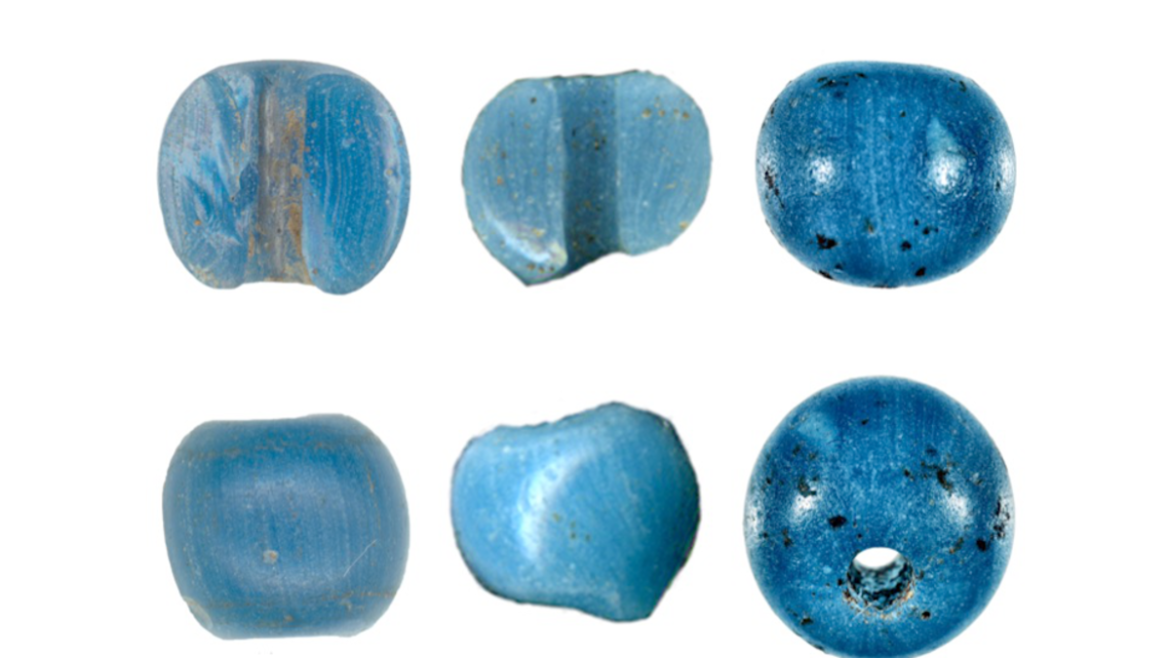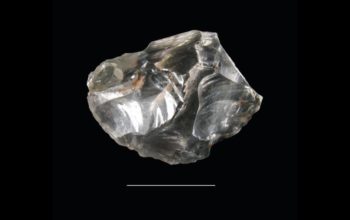Made in Italy, glass beads the size of blueberries were found by archaeologists in a Brooks Range house pit.

The following written content by Ned Rozell
Glass beads the size of blueberries found by archaeologists in a Brooks Range house pit might be the first European item ever to arrive in North America, predating the arrival of Columbus by a few decades.
Made in Venice, Italy, the tiny blue beads might have travelled more than 10,000 miles in the skin pockets of aboriginal adventurers to reach Bering Strait. There, someone ferried them across the ocean to Alaska.
At least 10 of the beads survived a few centuries in the cold dirt of three locations in northern Alaska. Archaeologists recently unraveled the mystery of the beads in a paper published in the journal American Antiquity.
Mike Kunz, one of the authors, is an archaeologist with the University of Alaska Museum of the North in Fairbanks. He retired in 2012 from the Bureau of Land Management after three decades as an expert on ancient people of Alaska north of the Arctic Circle. Working for Bureau of Land Management, he visited Punyik Point several times.
Punyik Point, a mile from the Continental Divide in the Brooks Range, is unoccupied today. It was a seasonal camp for generations of inland Eskimos.
Punyik Point was on ancient trade routes from the Bering Sea to the Arctic Ocean, and was probably a dependable place to hunt caribou as the animals moved in fall and spring, Kunz said.
“And, if for some reason the caribou didn’t migrate through where you were, Punyik Point had excellent lake trout and large shrub-willow patches,” he said.
Archaeologists have dug at Punyik Point for a long time. It’s where William Irving of the University of Wisconsin in the 1950s and 1960s found two turquoise beads, each with a hole through its center. Read more from University of Alaska Fairbanks.






